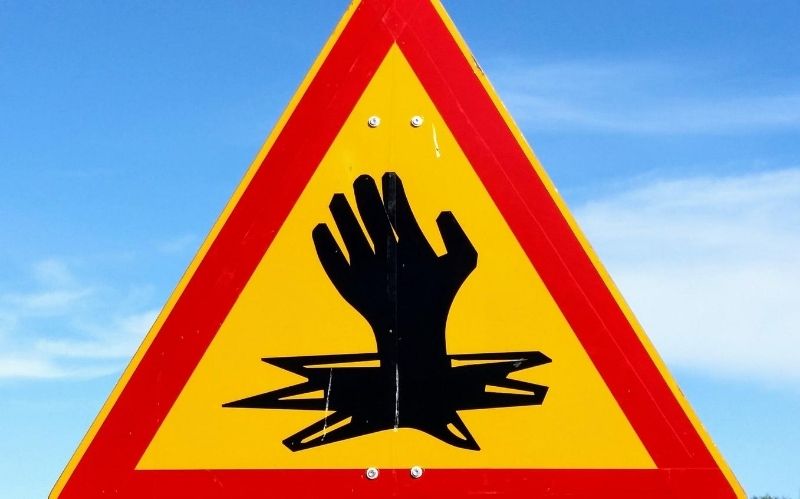No products in the cart.
Health And Safety For Small Businesses

As a small business owner, there are a lot of demands on your time. With so many responsibilities to juggle, health and safety can easily fall to the bottom of your priority list. However, accidents can happen at any time, even in low-risk environments, and overlooking health and safety can lead to high costs in sick pay, absence, and compensation claims. (Image Credit: Andrea Bellucci/Unsplash)
For small businesses, accident-related absence can have a big impact. One person missing work due to an injury can be a large part of your workforce, so you need to keep them safe.
For most businesses, health and safety arrangements don’t need to be complicated or time-consuming. All you need is the right processes in place to identify risks and to take the steps to protect you and your employees from risk.
Appoint Someone
An an employer, you should have another individual appointed to take charge of health and safety issues. This person must be competent, and they will need to have sufficient training and experience or knowledge and other qualities that allow them to assist you correctly. This might require formal training in health and safety, and may need more specific knowledge for your industry, such as hazmat training.
In addition, this person should have the obligation to work closely with experts so they’d devise the best health and safety plan possible. Lots of business owners send arrange meetings with expert ERISA consultants at erisaadvisorygroup.com in order to get all the necessary to achieve this. For example, they can help you ensure that the appropriate equipment is in place and that all employees are adequately trained.
Write A Health And Safety Policy.
Informing your employees about the health and safety policy being implemented in your business will give your staff the information they need to control their safety within the workplace. This also makes health and safety easier to manage. Do this by creating a health and safety policy and display a poster with the policy clearly in an area where all staff can see it and easily access it. Your policy ought to clearly state who does what within the business, when and how.
It isn’t complicated to create a proper health and safety policy, and it doesn’t have to take up most of your time. Once you have a policy written, you should make sure that you review it on a regular basis and is implemented properly and fully.
Risk Assessment
Risk assessment is essential for health and safety in any business. This means you will need to carry out a thorough examination of what in your business could potentially cause harm to employees, which will then give you somewhere to start to make the decisions on whether you need to enforce additional precautions. Your employees should be involved in the risk assessment of your company, as they can offer additional knowledge of what they think could do with being changed or improved. Your employees can give the best advice to help you develop a safer workplace, as they’re the ones who know the most about what they do on a day to day basis.
The steps for risk assessment are as follows:
- Identify the potential hazards
- Identify who might be harmed and how
- Evaluate the risks and decide on the precautions needed
- Record your findings and implement them
- Review your assessment and update if needed
Very few offices will always remain the same, as new equipment and procedures will be updated whenever needed, which could lead to different or new hazards. Because of this, you should review your risk assessment on a frequent basis, for example, every 12 months. This is an integral part of keeping your business running smoothly. Don’t forget to update your risk assessment any time you make any significant change within your business.
Training And Information
Every single person that you employ should know to conduct themselves in a safe manner at work, without risking the safety of others or themselves. You can make sure this happens by providing the initial information, instruction, and training sessions. Useful information to give them would be the hazards and risk they might face at work, the measures that you have put in place to deal with those hazards, and the emergency procedures that are in place. You should also ask your employees to give their feedback on the training so you can make sure it is relevant and helpful. Keep a record of any training that takes place so you can keep track of when refresher courses or training for new staff might be needed. This health and safety training should take place during work hours.
Workplace Facilities
It’s important to protect the safety of everyone who works in your office, and that must include people with disabilities. You must ensure that you have included the following in your health and safety procedures:
- Welfare facilities. To maintain the wellbeing of all staff, you need to have toilets, hand basins with hot and cold running water, soap, and towels or a hand dryer. You must also provide somewhere to access drinking water, a place to store clothing, and somewhere to eat meals or rest, such as a communal area or kitchen.
- Health issues. A healthy work environment is important, so you need to take the right measures to ensure you’re offering this. As an employer, you need to take care of adequate lighting, ventilation, temperature control, roomy workstations, suitable seating, and clean surroundings.
- Safety issues. Safety is essential, so you ought to check that your office has windows that can be opened, traffic routes and floors that are free from obstacles, properly maintained premises and equipment, and that glass doors that are clearly marked, made of safety glass, or covered with a safety material to prevent them from shattering.
Fire Safety
Most fires are preventable. As an employer, it is your responsibility to carry out a fire safety risk assessment and make sure this assessment is then kept up to date and reviewed on a regular basis. Make sure you provide appropriate fire safety measure to minimise the risk of injury or loss of life in the event of a fire.
Identify what could cause a fire, substances that will burn, and people who may be at risk. Control those risks, and bring in precautions including fire doors, fire extinguishers, fire detection, alarm systems, emergency lighting, fire exits, escape routes (don’t forget those disabled members of the team), fire safety signage, and fire drills.
















1 Comment